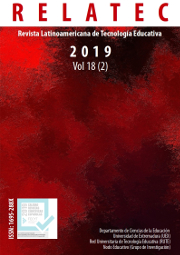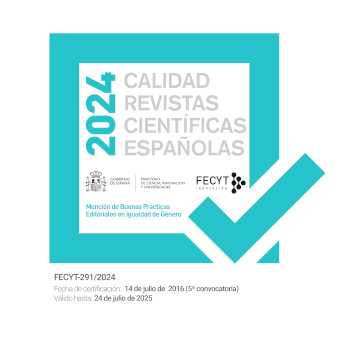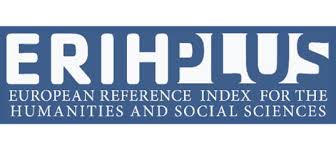O uso de plataformas digitais de video (OVPS) no preparo e nas aulas de música
DOI:
https://doi.org/10.17398/1695-288X.18.2.45Palavras-chave:
Plataformas Digitais de Video, Youtube, Videos, Aprendizagem Multimodal, Tecnologia MusicalResumo
O desenvolvimento de novas tecnologias e a popularidade da internet têm transformado nossos modos de ouvir, fazer e ensinar música. Muitos professores de música fazem uso da tecnologia em suas aulas de música com o intuito de enriquecer as experiências de seus alunos. No entanto, ainda há poucos estudos sobre o uso da tecnologia na educação musical, e, sobretudo, o uso de videos. Neste artigo, discutimos os resultados de um estudo exploratório acerca do uso de plataformas digitais de video como YouTube, Vimeo, Panopto e Dailymotion, por professores de música norte-americanos e em suas aulas. Através de um survey com 21 professores, nós investigamos: (1) a frequência de uso de videos no planejamento e nas aulas de música, (2) os tipos de videos utilizados por professors, (2) as caracteristicas dos videos utilizados em aulas de música, e (4) se há diferenças no uso de videos em aulas de música por ano letivo e modalidade (orquestra, banda, coral, e musicalização). Os resultados do survey sugerem que os professores de música usam plataformas digitais de video no planejamento e nas aulas de música, acreditando que os videos tornam as aulas mais ricas e interessantes. Implicações para a educação musical são delineadas ao final do artigo.
Downloads
Referências
Basu, T. (2019, January 15). The science of why «Baby Shark» is so freaking catchy. The Daily Beast. Retrieved from: https://www.thedailybeast.com/the-science-of-why-baby-shark-is-so-freaking-catchy?ref=scroll
Campbell, P. S., Scott-Kassner, C., & Kassner, K. (2017). Music for elementary classroom teachers. New York, NY: W. W. Norton & Company.
Colman, A. (2015). A dictionary of psychology, 4th
Creswell, J. (2017). Educational research. Upper Saddle River, NJ: Pearson.
Dirnhuber, J. (2017, May 2) Children turn backs on traditional careers in favour of internet fame, study finds. The Sun. Retrieved from https://www.thesun.co.uk/news/3617062/children-turn-backs-on-traditional-careers-in-favour-of-internet-fame-study-finds/
Gangnam Style. (n.d.). In Wikipedia. Retrieved October 5, 2019 from https://en.wikipedia.org/wiki/Gangnam_Style
Godinho, J. C. (2016). Miming to recorded music: Multimodality and education. Psychomusicology: Music, Mind, and Brain, 26(2), 189-195.
Ho, W. C. (2004). Use of information technology and music learning in the search for quality education. British Journal of Educational Technology, 35(1), 57-67.
Kruse, N. B., & Veblen, K. K. (2012). Music teaching and learning online: Considering YouTube instructional videos. Journal of Music, Technology & Education, 5(1), 77-87. DOI: 10.1386/jmte.5.1.77_1
Lamont, A. (2002) ‘Musical Identities and the School Environment’, In R.A.R. MacDonald, D.J. Hargreaves and D. Miell (eds.) Musical Identities (pp. 41–59). New York: Oxford University Press.
Lewis, J. (2018). Parents, children, and the popular music that binds them: New family dynamics and what they mean for community music. International Journal of Community Music, 12(1), 79-94.
Love, M.S. (2005). Multimodality of learning through anchored instruction. Journal of Adolescent and Adult Literacy, 48(4), 300-315.
Moore, A.H., Fowler, S.B. & Watson E.C. (2007). Active learning and technology: Designing the change for faculty, students, and institutions. Educause Review, 42(5), 42–61.
Pew Research Center (2018). Teens, social media and technology. Retrieved from: https://www.pewresearch.org/internet/2018/05/31/teens-social-media-technology-2018/
Rudolph, T. E., & Frankel, J. (2009). YouTube in music education. Milwaukee WI: Hal Leonard Corporation.
Salavuo, M. (2008). Social media as an opportunity for pedagogical change in music education. Journal of Music, Technology & Education, 1(2-3), 121-136.
Savage, J. (2007). Reconstructing music education through ICT. Research in Education, 78(1), 65-77.
Smith, H. M. (2011). Global connections via YouTube: Internet video as a teaching and learning tool. In Biamonte, N. (Ed.), Pop-Culture Pedagogy in the Music Classroom: Teaching Tools from American Idol to YouTube (pp. 29-43). Plymouth, England: Scarecrow Press.
Upitis, R., Abrami, P. C., & Boese, K. (2016). The use of digital tools by independent music teachers. In I. A. Sanchez & P. Isais (Eds.), Proceedings of the International Conference on Mobile Learning (pp. 108–112). Vilamoura, PT: International Association for the Development of the Information Society.
Whitaker, J. A., & Orman, E. K. (2014). A content analysis of responses to music teaching videos on YouTube. ISME Commission Research Proceedings, 330.
Yogman, M., Garner, A., Hutchinson, J., Hirsh-Pasek, K., Golinkoff, R.M. (2018, October). The power of play: a pediatric role in enhancing development in young children. Pediatrics, 142(3), 1-16.
YouTube. (n.d). Retrieved October 5, 2019 from https://www.youtube.com/about/press/
Downloads
Publicado
Edição
Secção
Licença
Los autores/as que publiquen en esta revista aceptan las siguientes condiciones:
1. Los autores/as conservan los derechos de autor y ceden a la revista el derecho de la primera publicación, con el trabajo registrado con la licencia Creative Commons Reconocimiento-NoComercial-SinObraDerivada 4.0 International (CC BY-NC-ND), que permite a terceros utilizar lo publicado siempre que mencionen la autoría del trabajo y a la primera publicación en esta revista.
2. Los autores/as pueden realizar otros acuerdos contractuales independientes y adicionales para la distribución no exclusiva de la versión del artículo publicado en esta revista (p. ej., incluirlo en un repositorio institucional o publicarlo en un libro) siempre que indiquen claramente que el trabajo se publicó por primera vez en esta revista.
3. Se permite y recomienda a los autores/as a publicar su trabajo en Internet (por ejemplo en páginas institucionales o personales) antes y durante el proceso de revisión y publicación, ya que puede conducir a intercambios productivos y a una mayor y más rápida difusión del trabajo publicado (vea The Effect of Open Access).









